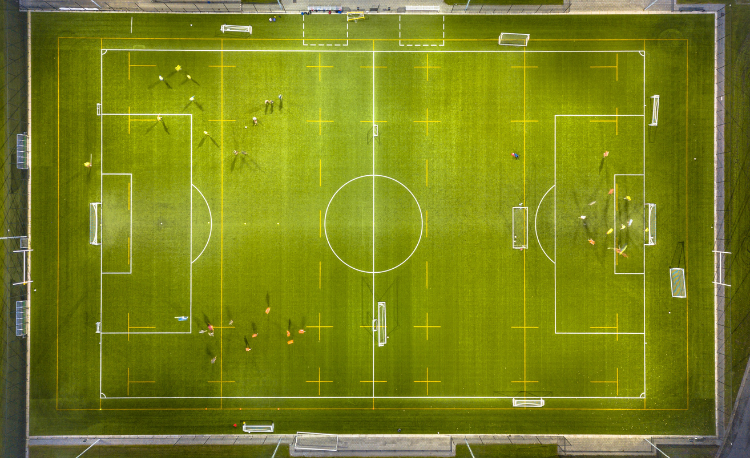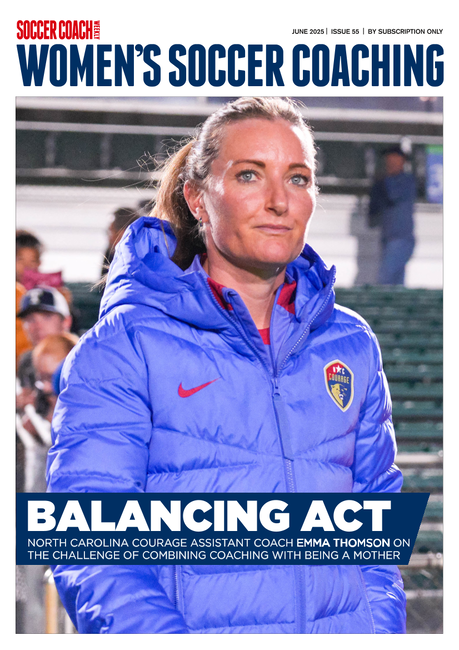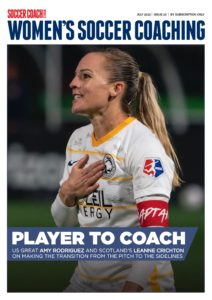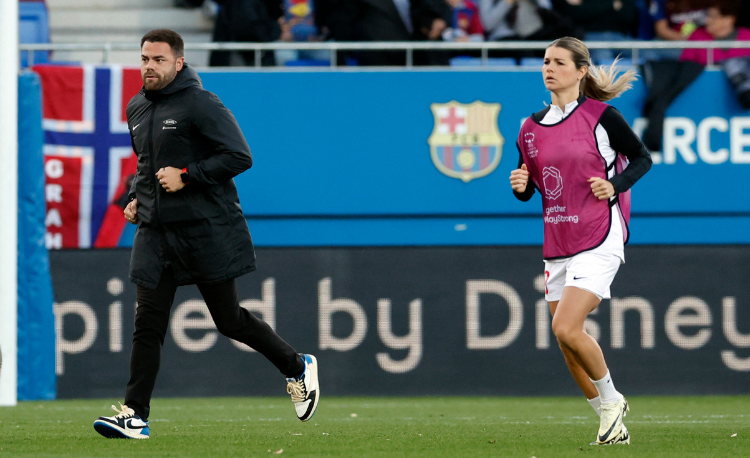You are viewing
1 of your 3 free articles
Balancing small-sided and full-size games in training
WSC Editor Hannah Duncan considers the benefits of small-sided games and full-size games in training, and how you can get the most out of using a combination of the two
Coaches often face the dilemma of choosing between small-sided games and full-size games in training sessions.
Each approach has its distinct benefits and drawbacks, but when used effectively in tandem, they can provide a comprehensive training experience that enhances player development. This article compares the two methods and offers strategies for integrating both into your training plans.
Benefits of small-sided games
1. Increased touches on the ball
Small-sided games, typically involving fewer players and a smaller field, ensure that players have more frequent touches on the ball. This increased interaction enhances ball control, dribbling skills and quick decision-making.
2. Improved fitness and agility
The smaller playing area in small-sided games demands constant movement, improving players’ fitness, agility and stamina. The intensity and pace of these games also help develop quick reflexes and sharpens overall physical conditioning.
3. Enhanced tactical understanding
With fewer players, each participant has a more significant role in the game, fostering a better understanding of tactics and positional play. Players learn to recognise space, make smart passes and develop a deeper awareness of their surroundings.
4. More goalscoring opportunities
Small-sided games create more opportunities for goalscoring, encouraging players to take more shots and improve their finishing skills. This setting also allows goalkeepers to face more shots, enhancing their reaction times and positioning.
Drawbacks of small-sided games
1. Limited full-field experience
While small-sided games are excellent for skill development, they don’t replicate the full-field experience, including the challenges of covering larger spaces and long-range passing.
2. Reduced context for game-specific situations
Certain aspects of the game, such as offside rules and the dynamics of set pieces, are difficult to practice in small-sided formats. Players may miss out on learning how to handle these crucial situations in a real game context.
Benefits of full-size games
1. Realistic game situations
Full-size games replicate actual match conditions, helping players understand the complexities of the 11v11 game, including spacing, positioning and team dynamics. This experience is vital for preparing players for competitive matches.
2. Development of long-range skills
Playing on a full pitch allows players to practice long-range passes, crosses and shots. This aspect of the game is crucial for developing a well-rounded skill set.
3. Improved tactical awareness
Full-size games enhance players’ understanding of team tactics, formations and strategies. Players learn how to communicate effectively, transition between defence and attack and apply tactical instructions from the coach.
4. Game-specific conditioning
Training on a full pitch helps players build endurance and adapt to the physical demands of a full match, including running long distances, managing energy levels and maintaining intensity over extended periods.
Drawbacks of full-size games
1. Fewer touches of the ball
In a full-size game, individual players may have fewer touches of the ball, which can limit opportunities for developing ball-handling skills and confidence.
2. Less individual focus
With more players on the field, it’s challenging for coaches to give individual attention and feedback. The focus tends to be on team performance rather than individual development.

Integrating small-sided and full-size games
1. Balanced training sessions
Incorporate both small-sided and full-size games in your training schedule where possible. Start with small-sided games to focus on skill development, fitness and tactical awareness. Gradually transition to full-size games to apply these skills in a realistic context.
2. Themed training days
Designate specific days for different types of training. For example, use the beginning of the week for small-sided games that emphasise technique and agility. Later in the week, focus on full-size games to work on tactical implementation and game-specific conditioning.
3. Drill integration
Combine drills that target individual skills with those that mimic game situations. For instance, follow a small-sided possession drill with a full-size game scenario that requires players to apply the same skills under realistic conditions.
4. Feedback and reflection
Encourage players to reflect on their performance in both types of games. Provide constructive feedback to help them understand the connection between small-sided skills and their application in full-size games.
Both small-sided and full-size games offer unique benefits and drawbacks. By effectively integrating both approaches, coaches can provide a comprehensive training environment that enhances individual skills, tactical understanding and overall team performance. Striking a balance between the two ensures players are well-rounded, adaptable and ready to excel in competitive matches. As with most things, there’s a trade-off to each, but by understanding the trade-offs and working to balance them over time, players can benefit from a holistic approach.
Newsletter Sign Up
Newsletter Sign Up
Discover the simple way to become a more effective, more successful soccer coach
In a recent survey 89% of subscribers said Women's Soccer Coaching makes them more confident, 91% said Women's Soccer Coaching makes them a more effective coach and 93% said Women's Soccer Coaching makes them more inspired.
*includes 3 coaching manuals
Get Inspired
All the latest techniques and approaches
Women's Soccer Coaching offers proven and easy to use soccer drills, coaching sessions, practice plans, small-sided games, warm-ups, training tips and advice.
We've been at the cutting edge of soccer coaching since we launched Soccer Coach Weekly in 2007, creating resources for the grassroots youth coach, following best practice from around the world and insights from the professional game.








